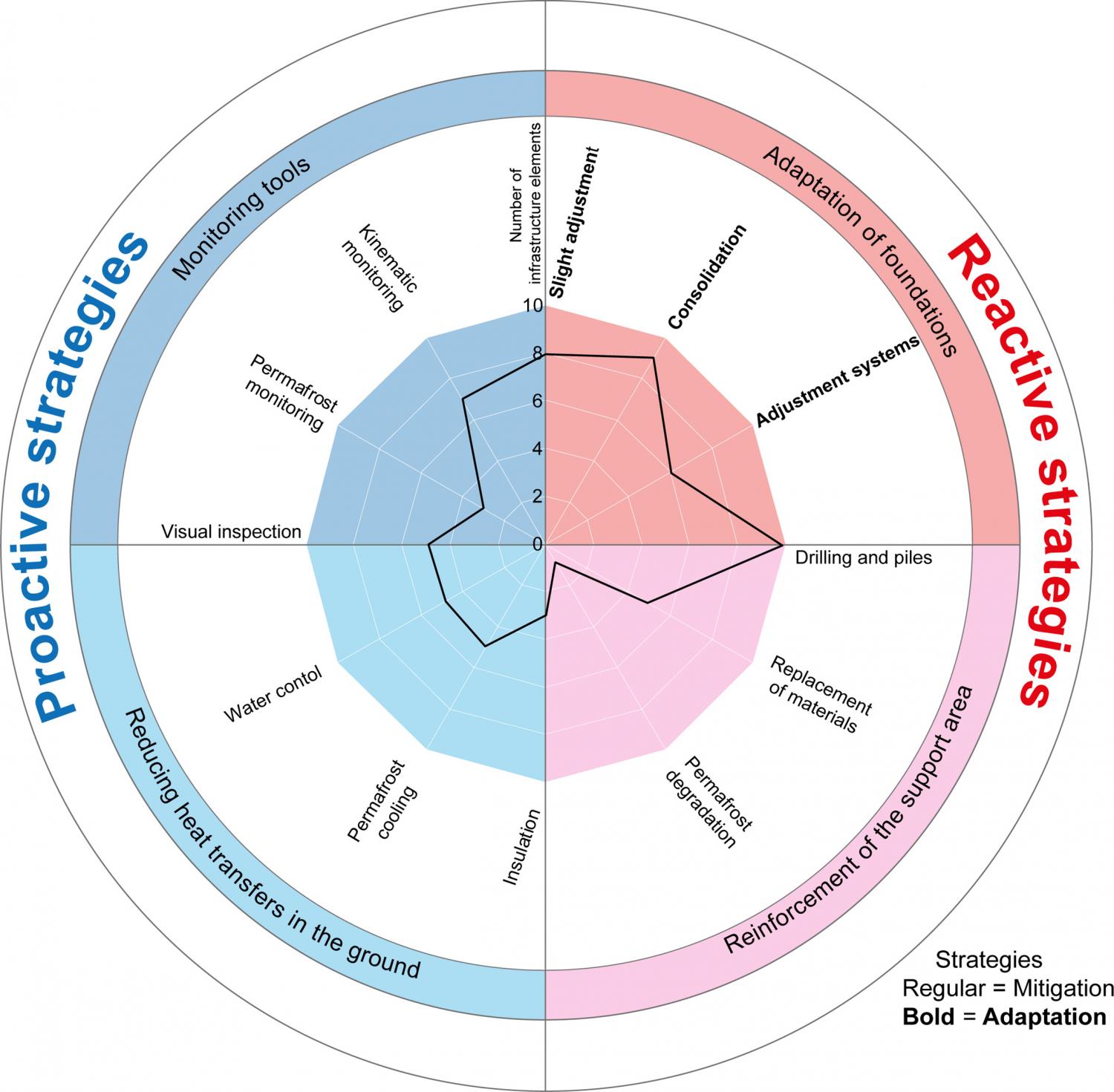
In the current context of climate change, high Alpine rock slopes and surface deposits are affected by a series of geomorphological processes whose evolution is partly conditioned by permafrost warming and thawing. This degradation directly impacts infrastructure in high mountain areas (e.g., huts or ropeway transport systems). In this study, we aim to assess the level of risk of destabilization for infrastructure built on permafrost in the French Alps and to discuss the adaptation and mitigation strategies developed by stakeholders. The analysis combines an inventory of the high mountain infrastructure with several data layers - including two recently developed regional maps of permafrost - analysed within a Geographic Information System. We update a destabilization risk index previously developed to identify and rank infrastructure at risk with a hazard characterisation and a vulnerability diagnosis, based on newly available data. The most at-risk infrastructure according to this new risk index are compared with the strategies implemented by the stakeholders to adapt the foundation, reinforce the ground, reduce heat transfer in depth, or monitor the evolution of the ground. Most of the strategies used on the most at-risk cases are reactive to repair the infrastructure after a destabilization.
